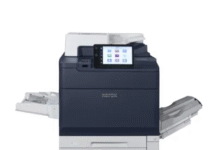Printing United Alliance, a graphic arts association based in North America, has released G7+, an updated version of its G7 color calibration specification that’s said to offer more accurate grey balance, improved tonality, and better performance in unusual printing conditions.
The G7/ G7+ specification is a definition of greyscale appearance together with a method for calibrating the CMYK output of a press to reproduce that greyscale definition. It’s device independent and in theory should allow printers to achieve similar visual appearances across a number of different presses.
This latest version of the G7 specification, which features new logic and algorithms, has been designed to ensue that it can maintain GRACoL visual similarity across a range of print systems, including textile, web-offset, newsprint, and inkjet. The new tonality algorithm is said to improve pictorial appearance on low-contrast media such as textiles, thin papers and absorbent boards with slightly lighter and more natural contrast, especially in flesh tones, assuming standard ink levels such as GRACoL 2013.
The G7+ specification uses Substrate Colorimetric Color Aims (SCCA) for more precise neutral grey on color substrates and should be able to deliver accurate ICC profiles and lifelike images on calibrated systems without color management.
There’s said to be virtually no visible difference between G7 and G7+ on typical commercial print production and proofing systems. That said, there is a more robust grey balance algorithm, derived from the same G7 CMY triplets, that’s said to give an improved neutral appearance even on strongly colored substrates.
Jordan Gorski, executive director of Idealliance, which is part of Printing United Alliance, explains: “G7 has raised the bar in the world of print and color output as colorimetry and visual output became the norm rather than simply relying on density for matching color. G7+ now integrates all modern print technology to be a standard that is applicable to all print, on all media, paper, board, film, signage, or textile, for any output condition that will truly provide print buyers and printers the ability to match color on packaging, publications, signage and wide format graphics, while maintaining alignment to the standards in place among existing workflows.”
Gorski added: “Much like the Alliance has grown and evolved to provide the industry with a community to gather and collaborate, the G7+ specification now serves all members of our industry for unified optimal color output regardless of where and how you print.”
G7+ training and certification will be available in-person during the Color Conference portion of the Printing United Technical Event Series this March 12-14 in Dallas, Texas; and soon on the Alliance’s iLEARNING+ platform.
Further details on printing.org
First published on https://www.nessancleary.co.uk/ on 31 January 2024


















